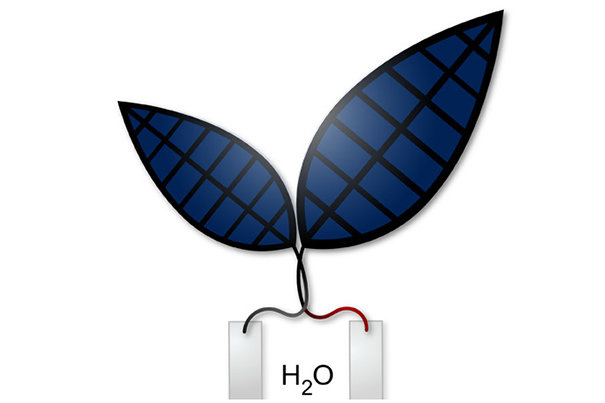The days of drilling into the ground in the search for fuel may be numbered, because if Daniel Nocera has his way, it'll just be a matter of looking for sunny skies.
Nocera, the Patterson Rockwood Professor of Energy at Harvard University, and Pamela Silver, the Elliott T. and Onie H. Adams Professor of Biochemistry and Systems Biology at Harvard Medical School, have co-created a system that uses solar energy to split water molecules and hydrogen-eating bacteria to produce liquid fuels.
The paper, whose lead authors include post-doctoral fellow Chong Liu and graduate student Brendan Colón, is described in a June 3 paper published in Science.
"This is a true artificial photosynthesis system," Nocera said. "Before, people were using artificial photosynthesis for water-splitting, but this is a true A-to-Z system, and we've gone well over the efficiency of photosynthesis in nature."
While the study shows the system can be used to generate usable fuels, its potential doesn't end there, said Silver, who is also a Founding Core Member of the Wyss Institute at Harvard University.
"The beauty of biology is it's the world's greatest chemist - biology can do chemistry we can't do easily," she said. "In principle, we have a platform that can make any downstream carbon-based molecule. So this has the potential to be incredibly versatile."
Dubbed "bionic leaf 2.0," the new system builds on previous work by Nocera, Silver and others, which - though it was capable of using solar energy to make isopropanol -- faced a number of challenges.
Chief among those challenges, Nocera said, was the fact that the catalyst used to produce hydrogen - a nickel-molybdenum-zinc alloy -- also created reactive oxygen species, molecules that attacked and destroyed the bacteria's DNA. To avoid that problem, researchers were forced to run the system at abnormally high voltages, resulting in reduced efficiency.
"For this paper, we designed a new cobalt-phosphorus alloy catalyst, which we showed does not make reactive oxygen species," Nocera said. "That allowed us to lower the voltage, and that led to a dramatic increase in efficiency."
The system can now convert solar energy to biomass with 10 percent efficiency, Nocera said, far above the one percent seen in the fastest growing plants.
In addition to increasing the efficiency, Nocera and colleagues were able to expand the portfolio of the system to include isobutanol and isopentanol.
